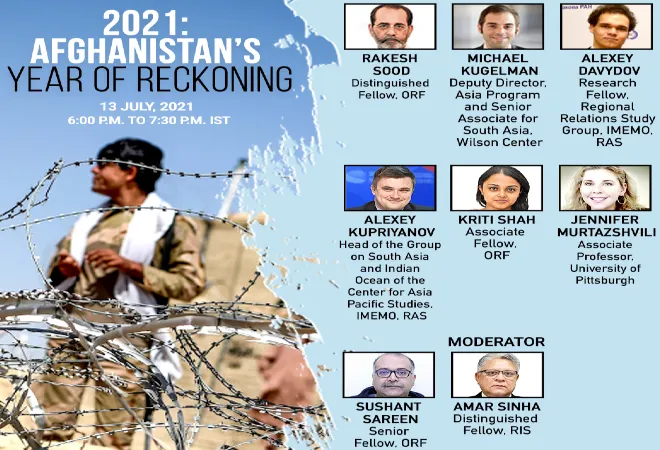
Since the signing of the US–Taliban deal on 29 February earlier in the year, Afghanistan has witnessed a dramatic increase in violence, targeted not only at government officials and Afghan and allied forces operating in the country, but also the civilian population, and international aid workers. However, despite the marked increase in the levels of violence, a security crisis further compounded by the looming health crisis amid political uncertainties, the Trump administration continued to push the Afghan government to pursue talks with the Taliban.
Although progress on the peace process front remained sluggish and considerably behind schedule, the fact that prisoner exchanges, albeit in small batches, were at all taking place between the government and the Taliban, had kept the optimists waiting with bated breath, counting on the much awaited yet narrow window of opportunity to see the peace process advance. On the political front too, the deadlock between President Ashraf Ghani and former Chief Executive Abdullah Abdullah, was on the verge of ending in a mutually agreed upon power-sharing agreement, when the grotesque barbarism of two dastardly attacks rocked Afghanistan.
At least 24 people — including new-born babies, mothers and nurses — were killed in the heinous incident of violence.
On Tuesday, 12 May, four gunmen dressed in military uniform attacked the Dasht-e-Barchi hospital in western Kabul, a medical facility that housed a maternity clinic as well, run by the international humanitarian organisation Doctor Without Borders. As per latest reports, at least 24 people — including new-born babies, mothers and nurses — were killed in the heinous incident of violence. In a separate attack the same day, a suicide bomber stormed the funeral of a police commander and former warlord in the Khewa district of Nangarhar province in eastern Afghanistan, and detonated himself, claiming 32 lives. Even with the knowledge that Afghanistan has suffered terrorist violence for almost two decades now, the brutal attacks on the maternity ward and the funeral in the holy month of Ramadan, have unleashed a wave of horror and disgust that is unlikely to die down anytime soon.
While the attack on the funeral was claimed by the Islamic State (ISKP or IS-K) branch that operates in Afghanistan and the larger, erstwhile Khorasan region, the planners of the hospital carnage are yet to surface. Given the demography of the area in Kabul where the hospital was located, a locality predominated by the minority community of Hazaras who are Shia Muslims, and have often been the target of ISIS — orchestrated attacks in the past, there is indeed a strong likelihood of Islamic State hand in the incident. Moreover, targeting big cities and urban centres has been the strategy employed by IS-K militants, while the Taliban, based on the agreement signed with the US, have promised to limit their “activities” to rural neighbourhoods. Meanwhile, the Taliban have denied a role in either of the attacks, but have also refrained from condemning them, which has rightfully raised questions about the authenticity of their historically dubious statements and guarantees, especially since the perpetrators of hospital violence remain unknown.
There is indeed a strong likelihood of Islamic State hand in the incident.
In a rare Twitter spat between the US military spokesperson, Col. Sonny Leggett, and his Taliban counterpart, Zabihullah Mujahid, it was revealed that the agreement included an informal commitment from all warring parties to reduce violence by no less than 80%. While the Afghan forces, along with the forces of Resolute Support, abided by the US call to observe strategic restraint in the interest of the peace process, Taliban violence continued unabated — barring a week preceding the signing of the deal — and in fact grew by 70% compared to the same period in 2019. As reported by Afghan officials stationed on the eastern borders of Afghanistan, the Taliban have stepped up military activity in the eastern border provinces of Kunar, Nangarhar, and Nuristan, supported by fighters from the Al-Qaeda, and Pakistan-based Jaish-e-Mohammad (JeM).
Shortly after the twin attacks of 12 May, President Ghani addressed the nation to declare a significant shift away from the position of “active defence,” to an all out resumption of operations against the Taliban, and other militant groups operating in the country. The Taliban, on the other hand, have the warned the government saying that the latter would be held responsible for any escalation of violence, if Afghan forces go on the offensive as planned.
An integral component of the US-Taliban deal was the demand that the Taliban sever all ties with the Al-Qaeda and other militant outfits for US troop drawdown to begin.
Technically, since the Taliban have not claimed responsibility for either of the two attacks and there is no evidence yet to conclusively prove otherwise, one may argue that it may be more prudent to continue negotiations for conflict resolution in good faith. However, an integral component of the US-Taliban deal, was the demand that the Taliban sever all ties with the Al-Qaeda and other militant outfits for US troop drawdown to begin, while guaranteeing non-use of Afghan soil by any entity, to devise attacks against the US and its allies. The Taliban, as the recent uptick in violence by the group suggests, albeit in the provinces rather than urban centres, have unabashedly disregarded the fundamental terms of the agreement, giving weight to the sceptic argument that the Taliban never intended to pursue peace in the first place.
It is also argued by some that the attacks of 12 May have given President Ghani an excuse to opt-out of the peace process set in motion with the signing of the US-Taliban deal, which the Afghan government considered a sell-out from the very beginning of the negotiations. The attacks, however, have indeed rendered true, government apprehensions about the ability of the Taliban to control the violence — their own, and that engineered by other militant entities — and deliver on the guarantees meant to safeguard the agreement.
The only way to ensure that fighting remains to a minimum, and the peace process continues to inch forward, would be for the US and Afghan forces to realistically acknowledge their collective inability to win the war by military means.
With military operations against the Taliban and other militant organisations, resumed in full swing, any possibility of the peace process advancing seems highly unlikely. However, while the Afghan government and the Taliban have been explicit about their respective strategic positions, the US seems to be contemplating the best way possible out of a security quagmire that can likely be expected to spiral out of control soon, if restorative measure are not undertaken at the earliest. In a cautiously worded press release, Secretary of State Mike Pompeo has condemned both attacks, while calling on the Taliban and the Afghan government to bring the perpetrators to justice, reflecting the strong American resolve to retain the gains of the peace process. At the same time, senior US military officials continue to reiterate that continued terrorist violence would result in equal retaliations by US forces, in support of the Ghani government.
The future of the Afghan peace process is therefore likely to come down to this: if the US decides to help the Afghan forces intensify their offensive against the Taliban, we can expect a sharp descent into all out war; alternatively, if the US withdraws regardless of an intra-Afghan political settlement, the Taliban will have achieved what they always wanted — a complete exit of foreign forces, and resultantly, a strategic leverage over the Afghan political establishment. In both scenarios, war and bloodshed would be guaranteed.
The only way to ensure that fighting remains to a minimum, and the peace process continues to inch forward, would be for the US and Afghan forces to realistically acknowledge their collective inability to win the war by military means, and that the continuation of conflict would only mean more violence. Acting upon that grave realisation however, is undoubtedly easier said than done. In the immediate future, therefore, while the Afghan forces may continue fighting the Taliban, the US would likely keep up with the troop drawdown, in keeping with their national security objectives, leaving Afghans to eventually “take care of themselves,” as President Donald Trump says.
The views expressed above belong to the author(s). ORF research and analyses now available on Telegram! Click here to access our curated content — blogs, longforms and interviews.




 PREV
PREV


